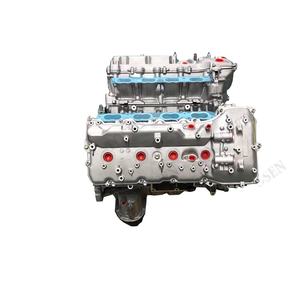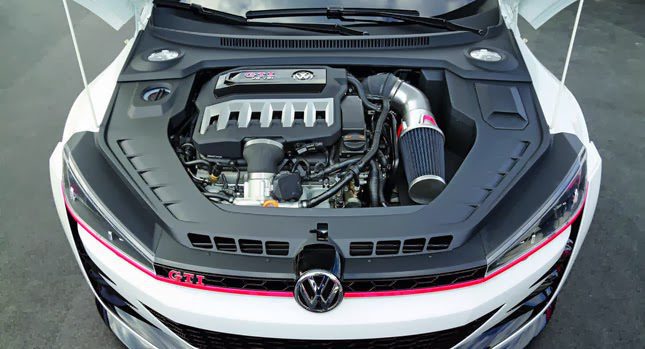Powerful and efficient Small Vehicle Electric Motor Performance Evaluation
Evaluating the performance of little auto motors is a nuanced task that needs an eager eye for information and a deep understanding of automotive engineering principles. By analyzing key metrics such as horsepower and torque, as well as examining fuel performance, we can reveal understandings into just how little auto engines can be optimized for peak efficiency.

Little Vehicle Electric Motor Performance Metrics
In evaluating the performance of tiny auto motors, crucial metrics such as velocity, gas effectiveness, and power outcome play a vital duty in determining their total performance and suitability for various driving problems. Acceleration, measured in seconds from 0 to 60 miles per hour, shows how swiftly a little cars and truck can reach higher rates, which is vital for merging onto highways or overtaking various other cars. Fuel effectiveness, usually measured in miles per gallon (MPG), mirrors just how far a little vehicle can travel on a gallon of gas, influencing running costs and ecological sustainability. Power output, revealed in horse power (HP) or kilowatts (kW), represents the engine's capacity to produce the essential pressure to propel the lorry, influencing its efficiency in different roadway conditions. By assessing these performance metrics comprehensively, producers, drivers, and auto lovers can make enlightened decisions concerning the option and optimization of little cars and truck motors to satisfy their particular requirements and preferences.

Horse Power and Torque Evaluation
With a fundamental role in comprehending little automobile electric motor torque, horse power and efficiency evaluation supplies understanding into the engine's power delivery attributes. In the context of tiny auto motors, horse power is vital for determining velocity, top rate, and overall efficiency. By understanding the connection between horse power and torque, auto designers can optimize engine efficiency to meet the specific demands of tiny cars and truck applications.
Fuel Performance Analysis
The evaluation of fuel performance in little vehicle electric motors plays a crucial role in identifying their environmental and economic effect. In little automobile electric motors, where compact size often correlates with much better fuel economic situation, various variables affect performance.
Small car motors that attain greater MPG scores are considered extra fuel-efficient, resulting in cost savings for drivers and decreased discharges that profit the environment. Manufacturers consistently aim to improve fuel effectiveness via innovations in engine modern technology, lightweight products, and aerodynamic designs.

Maximizing Small Automobile Engine Efficiency
Enhancing the effectiveness of small auto engines is vital in optimizing performance and reducing functional expenses. Maximizing little auto engine efficiency includes an all natural technique that considers various factors such as engine style, fuel monitoring systems, and overall lorry dynamics. One essential aspect of enhancing engine performance is guaranteeing proper maintenance schedules are followed, consisting of regular oil adjustments, filter replacements, and stimulate plug inspections. In addition, tuning the engine to run at its peak effectiveness can significantly boost overall performance.
Another crucial aspect in maximizing tiny vehicle engine performance is the application of sophisticated innovations such as turbocharging or crossbreed systems. These technologies can boost view it now power result without endangering gas performance, supplying an equilibrium between performance and economic climate. Moreover, optimizing engine efficiency also involves boosting burning performance, minimizing frictional losses, and improving thermal administration systems.
Future Trends in Small Automobile Motors
Taking into account advancing automotive innovations and the continual search of optimum small automobile engine efficiency, an expedition of future fads in little auto electric motors comes to be imperative - opel corsa engine. One prominent fad on the perspective is the increasing integration of electric powertrains in small cars and trucks. As the automobile industry shifts towards sustainability and reduced emissions, even more small car makers are investing in look at these guys electric motor innovation to enhance effectiveness and ecological friendliness
One more significant pattern is the advancement of smaller yet a lot more powerful turbocharged engines for tiny vehicles. By downsizing engine abilities and integrating turbocharging technology, car manufacturers can achieve greater power outcomes while preserving gas effectiveness. This pattern aligns with the expanding consumer need for small vehicles that supply a vibrant driving experience without jeopardizing on gas economy.
Additionally, the emergence of hybrid powertrains in little cars is expected to get grip in the future. Crossbreed systems offer the advantages of both interior burning engines and electrical motors, offering improved performance and gas performance. As improvements in battery technology proceed, small car motors are likely to end up being much more effective and efficient, satisfying the progressing needs of consumers and regulative needs for cleaner transport solutions.
Verdict
Finally, the analysis of tiny car electric motor efficiency metrics such as fuel, horse power, and torque performance is vital in optimizing engine performance. By assessing these factors, producers can enhance the general efficiency and power outcome of small auto motors (opel corsa browse around here engine). Future fads in small automobile electric motors are most likely to concentrate on improving performance while preserving fuel efficiency, making sure that little cars proceed to be a dependable and affordable option for customers
By examining vital metrics such as horse power and torque, as well as assessing gas performance, we can reveal insights into just how tiny automobile engines can be maximized for peak performance. Optimizing small auto engine performance involves an alternative strategy that thinks about different elements such as engine design, gas management systems, and general lorry dynamics.In light of advancing auto modern technologies and the continuous quest of ideal tiny cars and truck engine efficiency, an exploration of future fads in little automobile electric motors ends up being vital.In verdict, the analysis of little car motor efficiency metrics such as torque, horse power, and gas effectiveness is essential in maximizing engine efficiency. Future fads in tiny automobile motors are likely to focus on boosting efficiency while maintaining fuel performance, guaranteeing that little autos continue to be a affordable and reputable option for customers.